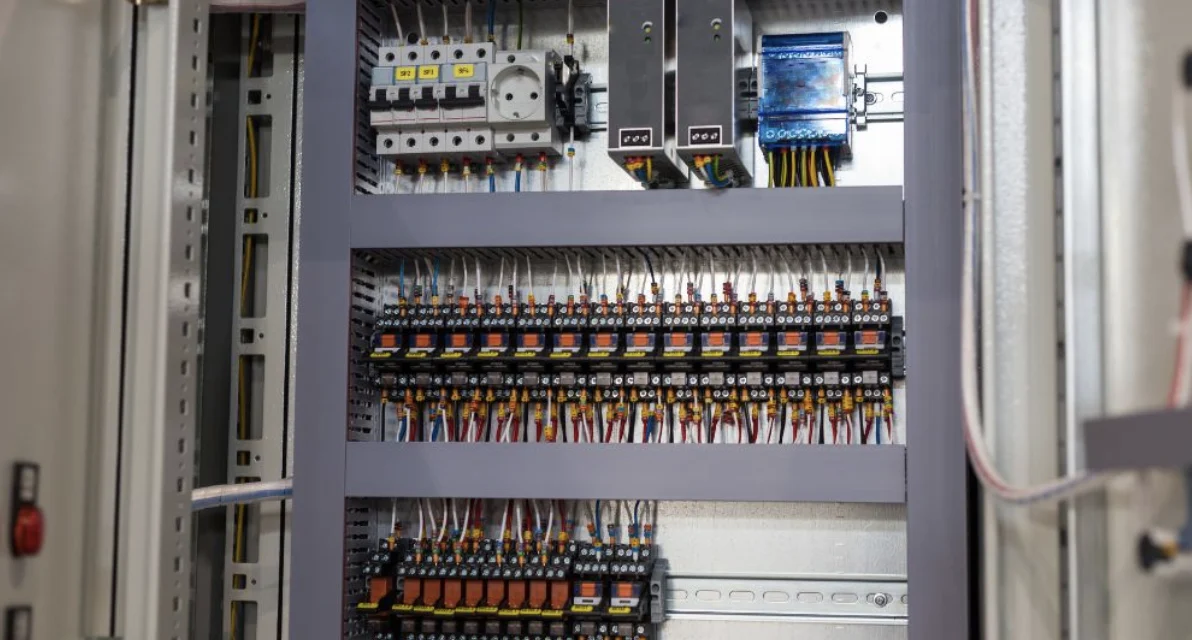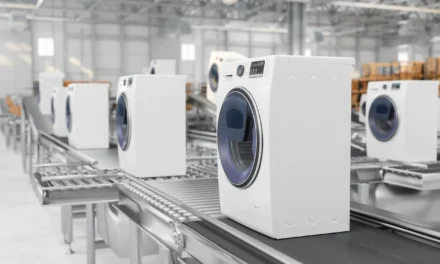The design of control panels significantly impacts the efficiency, reliability, and safety of electrical systems. A well-designed control panel ensures optimal performance by enabling smooth operation, quick troubleshooting, and easy maintenance. Here are several ways in which the design of control panels affects the efficiency of electrical systems:
1. Streamlined Operations
A well-organized control panel allows operators to quickly and easily monitor and manage electrical systems. Properly designed panels offer:
- User-Friendly Interfaces: Clear layout and intuitive design enable faster response times from operators.
- Logical Component Arrangement: Components like circuit breakers, switches, relays, and PLCs are organized in a way that minimizes confusion and allows easy access for maintenance or upgrades.
- Efficient Wiring: Properly arranged and labeled wiring reduces complexity, minimizes errors, and improves overall system reliability.
This streamlined approach ensures smooth operations, less downtime, and faster recovery from faults.
2. Enhanced System Integration
Control panels integrate multiple components into a unified system, facilitating the efficient operation of complex electrical processes. Key design features include:
- Centralized Control: Control panels centralize monitoring and control of different subsystems (e.g., motors, pumps, lighting), allowing for coordinated operation without manual intervention.
- Automation: With integrated PLCs or microcontrollers, control panels enable automated processes, reducing human error and increasing system efficiency by executing tasks at optimal times.
- Seamless Communication: Properly designed control panels with communication interfaces (e.g., SCADA, IoT, and networked systems) enable real-time data exchange and remote monitoring, leading to optimized decision-making and process control.
3. Safety and Protection
Efficient control panels not only manage operations but also protect the electrical system from damage. The design incorporates essential protection elements that prevent system failures and reduce downtime:
- Circuit Protection: Control panels often include fuses, circuit breakers, and overload relays that protect equipment from short circuits, power surges, and electrical faults, preventing costly damages and ensuring continuous operation.
- Thermal Management: Proper ventilation, heat dissipation techniques, and thermal management (e.g., cooling fans) are incorporated into the design to prevent overheating, which could lead to equipment damage and energy inefficiency.
- Grounding and Isolation: Well-designed grounding systems and isolation mechanisms improve safety and prevent system malfunctions caused by electrical imbalances or faults.
4. Energy Efficiency
Control panels can enhance energy efficiency in electrical systems by enabling the optimal use of electrical resources:
- Load Distribution: A well-designed control panel can balance the load across various components, preventing overloading and ensuring that the system uses energy efficiently.
- Energy Monitoring: Integrated energy meters and monitoring systems allow operators to track energy consumption and optimize usage, minimizing waste.
- Variable Frequency Drives (VFDs): Control panels that integrate VFDs allow motors to operate at different speeds based on demand, reducing energy consumption and wear on components.
5. Fault Detection and Diagnostics
A properly designed control panel includes diagnostic tools that help operators quickly detect issues and troubleshoot problems, improving system reliability and reducing downtime:
- Real-Time Monitoring: Monitoring systems display real-time data, such as voltage, current, and temperature, enabling operators to identify abnormal readings that might indicate a fault.
- Alarms and Alerts: Control panels are equipped with alarm systems to notify operators immediately in case of faults or abnormal conditions, allowing for quick corrective action and minimizing potential system failures.
- Diagnostic Features: Features like built-in fault diagnostics, LED indicators, and fault logs assist in pinpointing the cause of malfunctions, leading to faster repairs and minimal downtime.
6. Space Optimization
Efficient use of space within the control panel can directly impact its performance:
- Compact Design: Optimizing space ensures that components fit neatly and are easily accessible. This can improve airflow, making the system more efficient in terms of heat dissipation and reducing the likelihood of overheating.
- Modular Design: A modular control panel design allows for future expansion, enabling easy upgrades without significant redesign. This makes the system adaptable to future needs, ensuring continued efficiency as the system evolves.
7. Scalability and Flexibility
An efficient control panel design allows for scalability, meaning the system can be easily expanded or modified as requirements change:
- Expandable Modules: Well-designed control panels use modular components (e.g., I/O modules) that allow for easy expansion of the system as more devices are added, without requiring significant redesign or system downtime.
- Flexible Control: The design supports a range of operational requirements, from basic on/off control to advanced process automation, enabling the system to grow with changing operational needs.
8. Reduced Maintenance Needs
A well-designed control panel reduces the frequency and complexity of maintenance tasks, which improves system efficiency in the long term:
- Accessible Components: Components that are easy to access for maintenance (e.g., clear labeling and well-organized wiring) ensure that any required service can be performed quickly, reducing downtime and maintaining the overall system efficiency.
- Preventative Maintenance: Control panels designed with condition monitoring tools can detect early signs of wear or issues, allowing for proactive maintenance before system failure occurs.
9. Compliance with Standards
Control panels that adhere to international standards (e.g., IEC, UL, NEC, etc.) are designed to ensure high levels of safety, performance, and energy efficiency:
- Quality Assurance: Compliance with standards ensures that the control panel is built using high-quality components and construction practices, which directly impacts system reliability and efficiency.
- Regulatory Compliance: Control panels designed to meet local, national, and international regulatory requirements prevent costly legal issues and ensure that the system operates within acceptable safety and performance parameters.
10. Data Integration and Reporting
Control panels that integrate with data acquisition systems (e.g., SCADA, energy management systems, IoT) enable data-driven decision-making:
- Real-Time Data: By feeding data to centralized control systems, operators can make informed decisions that optimize system performance and energy consumption.
- Data Logging: Control panels that log data such as energy use, faults, and operational parameters help operators analyze long-term trends, enabling the identification of inefficiencies and the implementation of corrective measures.
Conclusion:
The design of control panels directly impacts the efficiency of electrical systems by improving operational control, ensuring safety and protection, enhancing energy efficiency, and facilitating system integration and automation. Properly designed control panels enable quick fault detection, diagnostics, and preventive maintenance, which reduces downtime and enhances the overall performance of the system. By ensuring proper load management, energy monitoring, and scalability, control panels contribute to long-term system efficiency, helping organizations optimize resources and minimize operational costs.
Hashtags
#OptimizedControlPanels #EfficientControlPanelDesign #ControlPanelEfficiency #PanelDesignOptimization #EnergyEfficientControlPanels #SystemEfficiencyThroughDesign #SmartControlPanelDesign #DesignForEfficiency #EnhancedPanelPerformance #ImprovedElectricalSystemPerformance #EfficientElectricalSystems #ImprovedSystemPerformance #EnhancedElectricalEfficiency #SystemPerformanceControlPanels #HighPerformanceControlPanels #PanelDesignForPerformance #MaximizedSystemEfficiency #BetterPanelDesign #ReducedEnergyConsumption #LowEnergyControlPanels #EnergySavingPanelDesign #EnergyEfficientSystems #ControlPanelsForEnergySavings #EnergyOptimizedPanels














